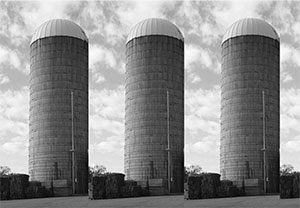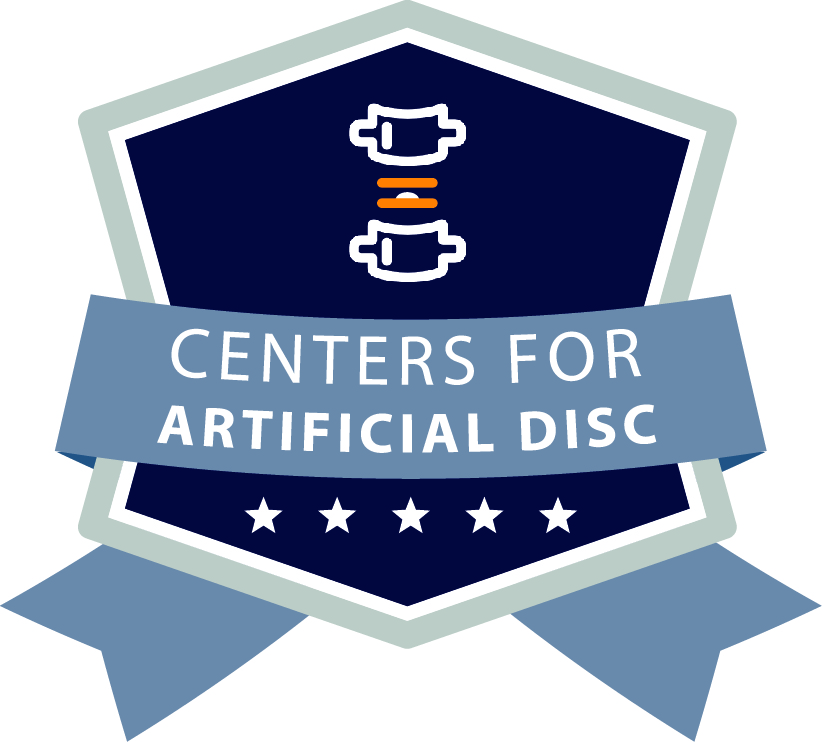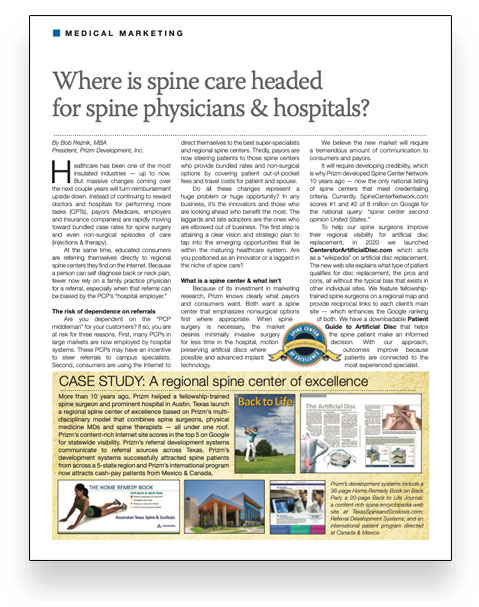Celebrating 30 years as the nation’s most experienced developer of spine & orthopedic centers of excellence.
- 817-481-2450
- Contact Us
-
Hospital & ASC Service Lines
Developing a spine care service line for a hospital or ASC
Hospitals and ASCs can face distinct challenges with the development of a spine care service line, which can result in trap doors to failure.
Trap door to failure: Compartmentalization, silos of care & internal competition for patients
For example, when patients get stuck in the PMR schedule, and fail to be referred along to the surgeon once non-surgical treatment options have been exhausted, this is symptom of silos of care dictated by the specialty bias of the spine provider. Same can be said for patients being express-laned to the spine surgeon when no red flag symptoms are present and non-surgical treatment options haven’t been exhausted.
 Spine surgeons are quick to note that their physician assistants can be more in sync with how they think than PMRs. But this is solely because the physician assistants work in close proximity to the surgeons all day long, and in surgery.
Spine surgeons are quick to note that their physician assistants can be more in sync with how they think than PMRs. But this is solely because the physician assistants work in close proximity to the surgeons all day long, and in surgery.
The same can be accomplished if the PMRs work more closely with the surgeons, and the silos are deconstructed.
Prizm has consulted with spine programs that had five spine surgeons and five physiatrists — yet they never communicated. Prizm determined the cause was due to the fact that the two teams were located on different floors in the same building. Other examples of dysfunctional space planning are where the surgeons are located in one pod, and the non-surgical specialists in another pod. Case conferences rarely work to create cross pollination of ideas.
For triage and cross referral to work effectively, a spine PMR must be in the same doc cubby as the surgeon, looking at films together, discussing cases when questions arise, so the patient can be cross referred on the fly, with the surgeon going into the PMR’s room to take over a pre-surgical patient, or a PMR taking the surgeon’s room when the patient is a simple acute, non-surgical patient.
Consequently, the product’s success or failure can be tied to dysfunctional space planning.
The reality, Prizm has observed, is that when spine physicians do their own space planning, the space plans are typically based on an out-of-date treatment model that relates to how they trained. These out of date space plans were developed in a historical world that REWARDED fragmentation, over-treatment and silos of care with additional CPTs and increased revenues.
However, that past world is behind us. Using the same strategies, will inevitably produce an Edsel, or said another way, a Spruce Goose plane that cannot fly. Consequently, Prizm is able to explain and help those involved to understand that the future world of spine care will ECONOMICALLY PUNISH those using these old methods.
Instead, for a spine center to survive the reimbursement flip that will most certainly take place during 2016 to 2020, it needs to be designed from the ground up in a new and different way that enables the spine surgeons, spine physiatrists, spine therapists, hospital and ASC to be rewarded for providing PRUDENT and efficient spine care under case rates and bundled prices for month-long episodes of care.
Disclaimer:
The pictures displayed in this website are images of physicians, patients and employees who have consented to have their pictures in this website. If you are viewing in Internet Explorer 8 or older you may need to update your browser.
HAVE A QUESTION?

Wouldn’t it be convenient if someone created a listing of spine centers of excellence across the United States that all emphasize non-surgical treatment options before surgery?
Finally, there is a place.

Centers for Artificial Disc is the only verified national listing of spine centers that specialize in artificial disc replacement surgery.
CentersForArtificialDisc.com